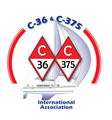I'm installing a "raw water flow sensor" after a near death (to the engine) experience. All turned out well, but still, this is cheap insurance.
Anyway, in looking for fittings to connect the unit into the intake line I found that the recommended plastic parts would be "Marelon" but that they do not make what would be required for a 1" male thread to 5/8" male hose barb.
I had been told that nylon is unacceptable below the water line and brass is pretty pricey. So....
While talking to a prominent dealer of Marelon parts he said a couple of interesting things. First: most types of brass are not a very good choice for these fittings. Second: the objection to nylon is a freezing issue, not corrosion or salt water deterioration. He said that if were him he would use nylon if freezing is not an issue. (This guy knows at this point that he is not going to sell me anything, so that steps up my confidence in his advice, but who knows)
Well, I'm sure someone in Catalina land has an opinion and if so I would love for you to share it with me...Thanks
Neil Roach
"Crewless"
1992 36, Mark I
Hull # 1174
Seattle

Neil, Marelon is the material used on all the thru hull valves on Catalinas. Brass is useless on a boat because of its materials, bronze is the metal used. Nylon or other plastics should not be used. All of those materials will suffer severely from freezing. Google Marelon, I think Forespar sells it.
Stu Jackson, C34IA Secretary, C34 #224, 1986, SR/FK, M25 engine, Rocna 10 (22#)
Thanks Stu. It was the rep at Forspar who talked to me about nylon and Maralon. He said that freezing was the only real issue with nylon and that the needed parts were not made in Maralon.
I mis-spoke about brass, meaning bronze. I will check further into bronze fittings.
As there is zero chance of freezing being an issue in my case, I have to say that nylon is tempting, especially since the thru hull is always closed when the engine is not in use and with the "raw water alarm" installed, any leak would be quickly detected.
I haven't decided and will continue to do the research, so any other input is welcome.
Neil Roach
"Crewless"
1992 36, Mark I
Hull # 1174
Seattle
I think your biggest issue, besides the material, is the conversion from the 1" to 5/8" male fittings. Usually the reducers step down only one or two hose sizes, while yours is almost half.
Stu Jackson, C34IA Secretary, C34 #224, 1986, SR/FK, M25 engine, Rocna 10 (22#)
The solution is a 1' to 1/2" bushing and then the appropriate 1/2"NPT to
5/8" barb. I don't think going down to the 1/2 in is going to significantly reduce the flow and as the Maralon barb out of the seacock is 1/2"-5/8" combo the half inch size is already in the system.
I found the bronze parts at Jamestown Dist for about 40 bucks plus shipping. I just have to decide if that is the way to go.
Thanks for your input. More is always welcome.
Neil Roach
"Crewless"
1992 36, Mark I
Hull # 1174
Seattle
[QUOTE=neilroach;14961]Thanks Stu. It was the rep at Forspar who talked to me about nylon and Maralon. He said that freezing was the only real issue with nylon and that the needed parts were not made in Maralon.
I mis-spoke about brass, meaning bronze. I will check further into bronze fittings.
As there is zero chance of freezing being an issue in my case, I have to say that nylon is tempting, especially since the thru hull is always closed when the engine is not in use and with the "raw water alarm" installed, any leak would be quickly detected.
I haven't decided and will continue to do the research, so any other input is welcome.[/QUOTE]
Neil,
He was probably pro nylon because Marelon IS nylon! Marelon is but one formulation of DuPont Zytel which is basically glass reinforced nylon.
Nylon is far better than PVC or brass for below water connections but still not as good or as strong as Marelon or a true 85-5-5-5 bronze. On many occasions builders and myself have been forced to use nylon below water because Forespar has a VERY INCOMPLETE line of fittings. Marine East has a decent line of nylon fittings that many of the builders use when a part is not available in Marelon.
Be aware that many of the flow sensors are PVC and PVC is one piece of gear to be wary of below water. If it is in-line in the hose then less chance of it breaking.
-Maine Sail
https://www.marinehowto.com/
OK, since the recommended place to install the sensor is in the intake hose and since the pressures at that point are probably very low while the engine is running and are extremely low when the engine is not and if freezing is not an issue, would it be safe to assume that vibration transmitted through the engine side hose to the sensor and its associated fittings, it the real enemy here, over and above corrosion etc..? I seems to me that the weak link and most likely place for a failure is the hose barb on the engine side of the hose at the output side of the sensor, transmitted vibration being the enemy. Does this make sense?
Neil Roach
"Crewless"
1992 36, Mark I
Hull # 1174
Seattle
I don't know the size of the sensor, nor where you intend to install it. But I think I'd want to attach the hose to something solid, on both sides of the sensor, so that vibration would not be as much of an issue.
Gary and Cathy Price
1997 C36 Mk II Tall Rig/Wing Keel Imagine...
Hull # 1617
Worton Creek, Md.
Northern Chesapeake Bay